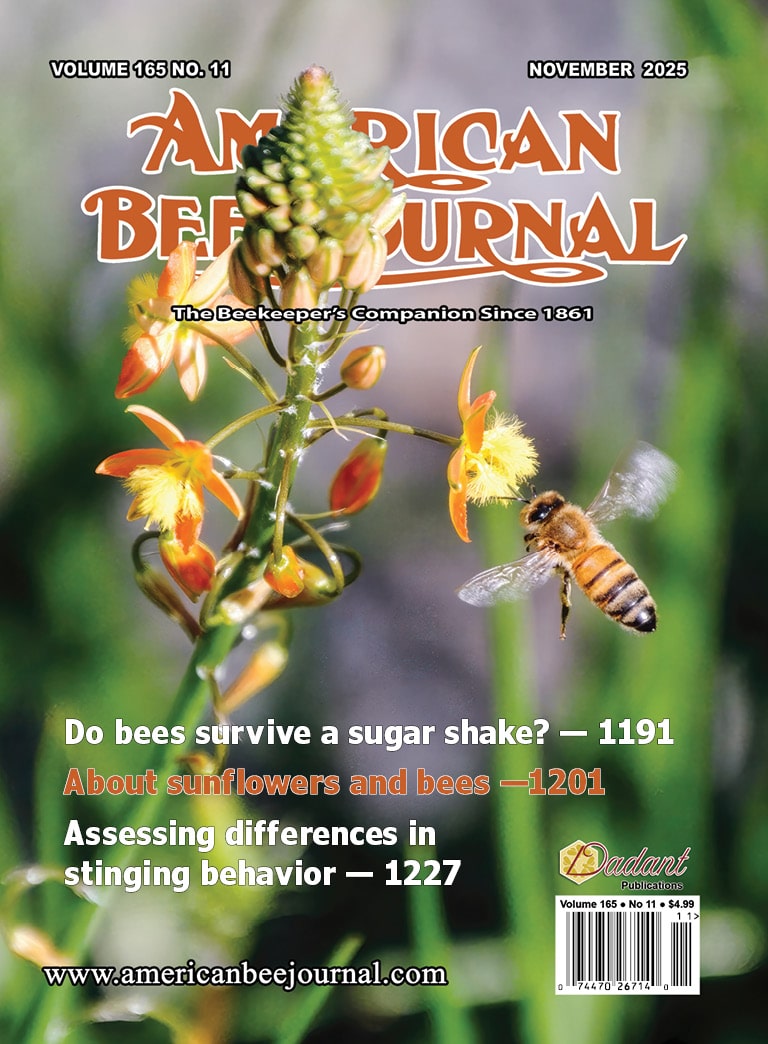Bee classes are filling up and the new year is beginning. Those going into beekeeping for the first time are expecting some form of pleasure with eager questions for information. One can see it in their actions and faces.
As the above weather map of the United States in January shows, there is not much opportunity to open hives and study bees in those areas shown outside the red, yellow, or green areas. Remember that weather is very unpredictable at times and this map gives a general idea of the U.S. weather in January. Even California, Texas and Florida are not immune to cold weather. This is a time for veteran and beginning beekeepers to gather information and prepare for the coming season.
The difference between failure and success lies in a number of things facing every one of us. If one is building a house, as many of us have seen with hurricanes and tornados, no location is really safe. One may start with a good foundation, that is true, but the location of that foundation may be critical.
Let me use the term “foundation” to describe the information you will explore learning about honey bees. Beekeeping is challenging even for the best and most experienced beekeeper and success is not guaranteed.
The best way to begin keeping bees is to find someone with experience to help advise you. The next best way is to find a class taught by a local beekeeping association. I put an emphasis on local beekeeping clubs and associations because to know how to keep bees is learning all one can about local weather conditions, land use, and bee management practices for the place where the bees are to be located.
I have mentored a number of new beekeepers and often ask them how they feel about that first-year experience at the end of the year. This is what they had to say:
- “It’s like taking a baby home from the hospital. You don’t know _ _ _ _ about taking care of them, they cry out for help and worst of all they keep you up all night! And they can be a challenge!”
- “The biggest mistake I made was to buy a beehive before I even knew where to put it.”
- “One will learn more about honey bees working with them in the bee yard. Bee school is often confusing, happens so quick, and remembering everything is hard. Without practical hands-on experience, they are handicapped from the beginning.”
- “If you’re interested, start small. This is a grueling activity. It can get pretty miserable. If you are not prepared for the change in seasons, you could lose everything.”
- “If you don’t have time to take care of the bees, don’t start. They are like my dog. If I don’t feed it, take it for a morning walk, or take it to the vet when needed, I am guilty of animal cruelty.”
For those who have successfully moved on from that first year of keeping bees, there is a great wealth of reading material to help manage bees. It is important to keep up on the latest techniques and understand the need for bees to survive. The various topics to be covered in this basic beekeeping column are endless. I have a number of concerns that I would like to share with you. Now seems like a good time to start at the basic level and share concerns I have faced with my bees.
Honey bees are livestock. Pure and simple, they require a keeper who has time and who is willing to put forth an effort to keep them. My experience keeping bees goes back to 1949. That is the year I had my first bee yard located on Oren Barber’s farm located about 5 miles north of St. Marys, Ohio. My grandfather and father were commercial beekeepers and set me up with 10 hives of bees started …


